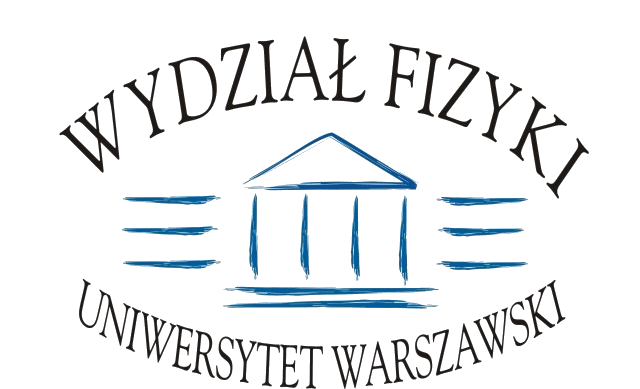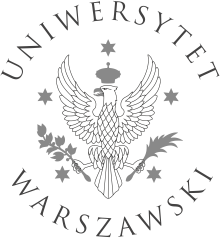Seminarium Zakładu Fizyki Litosfery
2006/2007 | 2007/2008 | 2008/2009 | 2009/2010 | 2010/2011 | 2011/2012 | 2012/2013 | 2013/2014 | 2014/2015 | 2015/2016 | 2016/2017 | 2017/2018 | 2018/2019 | 2019/2020 | 2020/2021 | 2021/2022 | 2022/2023 | 2023/2024 | 2024/2025 | Strona własna seminarium
2025-06-20 (Piątek)
dr hab. Marcin Wesołowski (University of Rzeszów, Faculty of Exact and Technical Sciences, Institute of Physics)
During the seminar, a new flux-nuclear mechanism was presented, which explains the causes of cometary outbursts. This mechanism should be considered as a two-stage process. In the first stage, it is necessary to take into account the sublimation flux that occurs through the porous structure of the cometary nucleus. The second stage is the reaction of the comet nucleus to the occurring sublimation. The consequence of this process is the migration (redistribution) of porous agglomerates on the surface of the cometary nucleus, the formation of landslides (local avalanches), the formation of dunes, the emission of porous agglomerates to the coma and the loosening of the surface layer, which is consequently destroyed. Let us note that these processes are part of the broadly understood cometary activity, i.e. the interaction of sublimating ice with the comet nucleus. As a result of intensive sublimation of ice, the loosened cometary material is thrown into the coma, which causes an increase in the total scattering cross-section. An additional contribution to this scattering cross-section is the emission of matter particles via jets. In such a case, these particles, with a local narrowing of the jet channel, can lead to its complete or partial blockage. This leads to an increase in the pressure of the gas trapped in the cavity. If the value of the pressure of the trapped gas exceeds the mechanical strength to cracking, then a fragment (upper part) or even the entire cavity is destroyed. The effect of such destruction is the disintegration of this fragment of the nucleus into porous primary agglomerates and their emission to the coma. Then the incident sunlight is effectively scattered, which leads to an increase in the brightness of the comet, i.e. its outburst.
Email registration for the seminar with Dr. hab. Konrad Kossacki, University Professor:
Konrad.Kossacki@fuw.edu.pl
The flux-nuclear mechanism as the cause of cometary outbursts – a solution to an old problem
During the seminar, a new flux-nuclear mechanism was presented, which explains the causes of cometary outbursts. This mechanism should be considered as a two-stage process. In the first stage, it is necessary to take into account the sublimation flux that occurs through the porous structure of the cometary nucleus. The second stage is the reaction of the comet nucleus to the occurring sublimation. The consequence of this process is the migration (redistribution) of porous agglomerates on the surface of the cometary nucleus, the formation of landslides (local avalanches), the formation of dunes, the emission of porous agglomerates to the coma and the loosening of the surface layer, which is consequently destroyed. Let us note that these processes are part of the broadly understood cometary activity, i.e. the interaction of sublimating ice with the comet nucleus. As a result of intensive sublimation of ice, the loosened cometary material is thrown into the coma, which causes an increase in the total scattering cross-section. An additional contribution to this scattering cross-section is the emission of matter particles via jets. In such a case, these particles, with a local narrowing of the jet channel, can lead to its complete or partial blockage. This leads to an increase in the pressure of the gas trapped in the cavity. If the value of the pressure of the trapped gas exceeds the mechanical strength to cracking, then a fragment (upper part) or even the entire cavity is destroyed. The effect of such destruction is the disintegration of this fragment of the nucleus into porous primary agglomerates and their emission to the coma. Then the incident sunlight is effectively scattered, which leads to an increase in the brightness of the comet, i.e. its outburst.
Zapisy mailowe u pana dr hab. Konrada Kossackiego, prof. ucz.:
Konrad.Kossacki@fuw.edu.pl
Zapisy mailowe u pana dr hab. Konrada Kossackiego, prof. ucz.:
Konrad.Kossacki@fuw.edu.pl
During the seminar, a new flux-nuclear mechanism was presented, which explains the causes of cometary outbursts. This mechanism should be considered as a two-stage process. In the first stage, it is necessary to take into account the sublimation flux that occurs through the porous structure of the cometary nucleus. The second stage is the reaction of the comet nucleus to the occurring sublimation. The consequence of this process is the migration (redistribution) of porous agglomerates on the surface of the cometary nucleus, the formation of landslides (local avalanches), the formation of dunes, the emission of porous agglomerates to the coma and the loosening of the surface layer, which is consequently destroyed. Let us note that these processes are part of the broadly understood cometary activity, i.e. the interaction of sublimating ice with the comet nucleus. As a result of intensive sublimation of ice, the loosened cometary material is thrown into the coma, which causes an increase in the total scattering cross-section. An additional contribution to this scattering cross-section is the emission of matter particles via jets. In such a case, these particles, with a local narrowing of the jet channel, can lead to its complete or partial blockage. This leads to an increase in the pressure of the gas trapped in the cavity. If the value of the pressure of the trapped gas exceeds the mechanical strength to cracking, then a fragment (upper part) or even the entire cavity is destroyed. The effect of such destruction is the disintegration of this fragment of the nucleus into porous primary agglomerates and their emission to the coma. Then the incident sunlight is effectively scattered, which leads to an increase in the brightness of the comet, i.e. its outburst.
Email registration for the seminar with Dr. hab. Konrad Kossacki, University Professor:
Konrad.Kossacki@fuw.edu.pl
2025-01-24 (Piątek)
Sylwia Adamus
Recurrence Quantification Analysis (RQA) - różnorodność zastosowań w badaniach geofizycznych
Kontynuacja seminarium dotyczącego podstaw RQA i możliwych zastosowań w badaniach geofizycznych, ze szczególnym uwzględnieniem analizy dynamiki danych sejsmicznych.
Zapisy mailowe u pana dr hab. Konrada Kossackiego, prof. ucz.: Konrad.Kossacki@fuw.edu.pl .
Zapisy mailowe u pana dr hab. Konrada Kossackiego, prof. ucz.: Konrad.Kossacki@fuw.edu.pl .
2025-01-10 (Piątek)
dr hab. Marcin Wesołowski, prof. UR (University of Rzeszów, College of Natural Sciences, Institute of Physics)
Is it possible to create a realistic model of a cometary nucleus in the laboratory? Imaging the surface and interior of a cometary nucleus model using computed tomography
Planetary analogues are crucial for studying space bodies, providing controlled environments to investigate processes, properties, and phenomena that occur on planetary surfaces and interiors. For comets, models are constructed using porous dust-ice agglomerates to replicate the primary components of cometary material, enabling investigations into sublimation pathways, cavity formation, and the behavior of gas and dust under varying conditions. This study presents the results of imaging a scaled-down cometary nucleus model using computed tomography (CT) to examine its internal structure. The CT scanning process generated a three-dimensional representation of the nucleus, with a two-dimensional map of the X-ray attenuation coefficient distribution. Multiple attenuation measurements, processed through reconstruction algorithms, resulted in 248 virtual cross-sections, each 1.25 mm thick. Analysis of these cross-sections revealed cavities where sublimating gas accumulated and veins that facilitated sublimation, reflecting the complex heterogeneity observed in real cometary nuclei. By measuring the volume fractions of the model components, the density of the comet nucleus was determined, aligning with the upper range of densities observed in some comets. These findings highlight the value of laboratory-based cometary models in improving the understanding of the physical processes driving cometary activity and evolution.
2024-12-20 (Piątek)
mgr Mikołaj Zawadzki (IGF UW)
Pomiary anomalii ziemskiego pola magnetycznego wywołanych przez impakty meteorytów
Tematyka badań finansowanych przez Ministerstwo Nauki w ramach programu "Perły Nauki" dotyczy anomalii ziemskiego pola magnetycznego wywołanych przez impakty meteorytów w Europie. Jak dotąd przeprowadzono pomiary magnetyczne w Polsce (krater Morasko), Litwie (krater Vieprai), Łotwie (krater Dobele) oraz Estonii (kratery Ilumetsa, Kärdla, Tsõõrikmäe, Kaali oraz hipotetyczny krater Simune). Dotychczasowe wyniki wskazują na znaczny wpływ powstania tak zwanej anomalii termoremanentnej (TRM) w wyniku impaktu meteorytów. Planowane jest przeprowadzenie kolejnych pomiarów na obszarze kraterów w Niemczech, Szwecji, Norwegii oraz hipotetycznego krateru Sirente we Włoszech.






